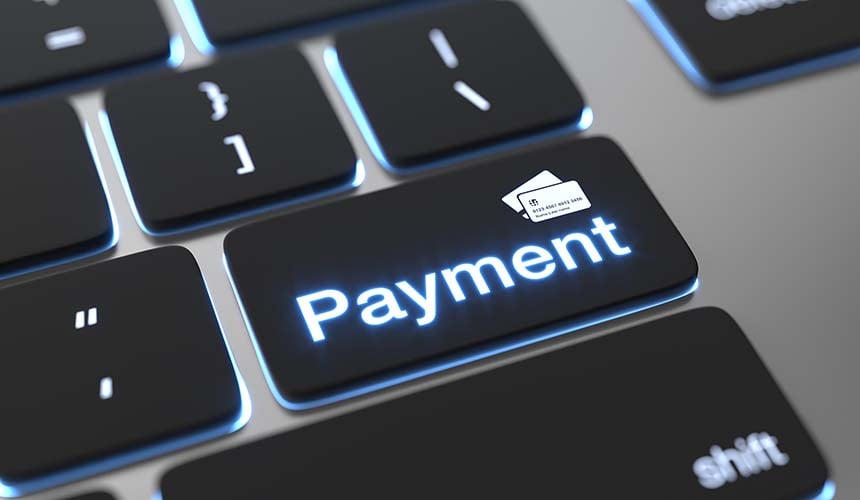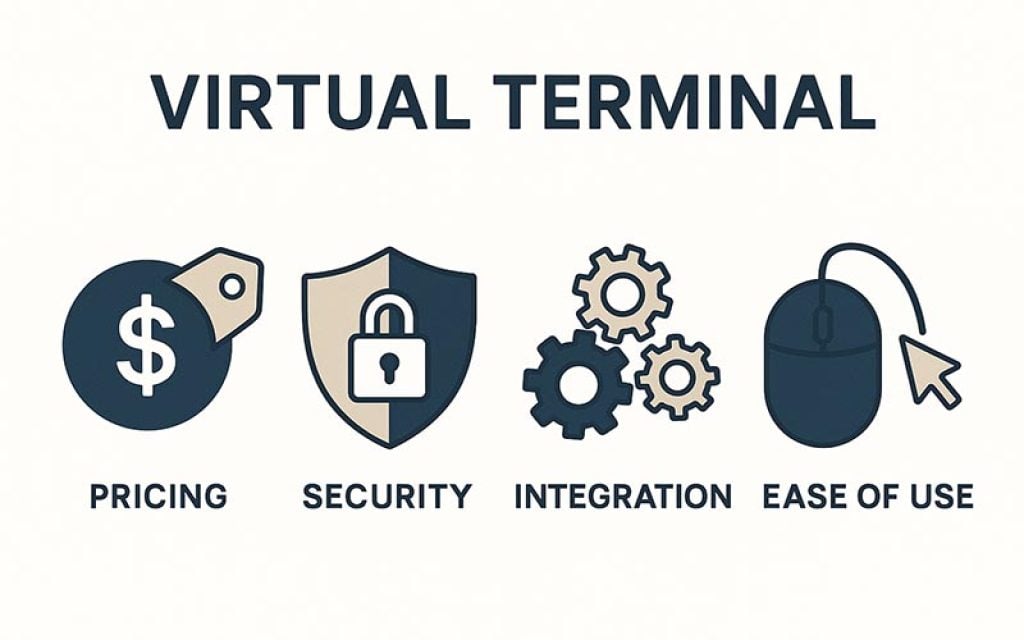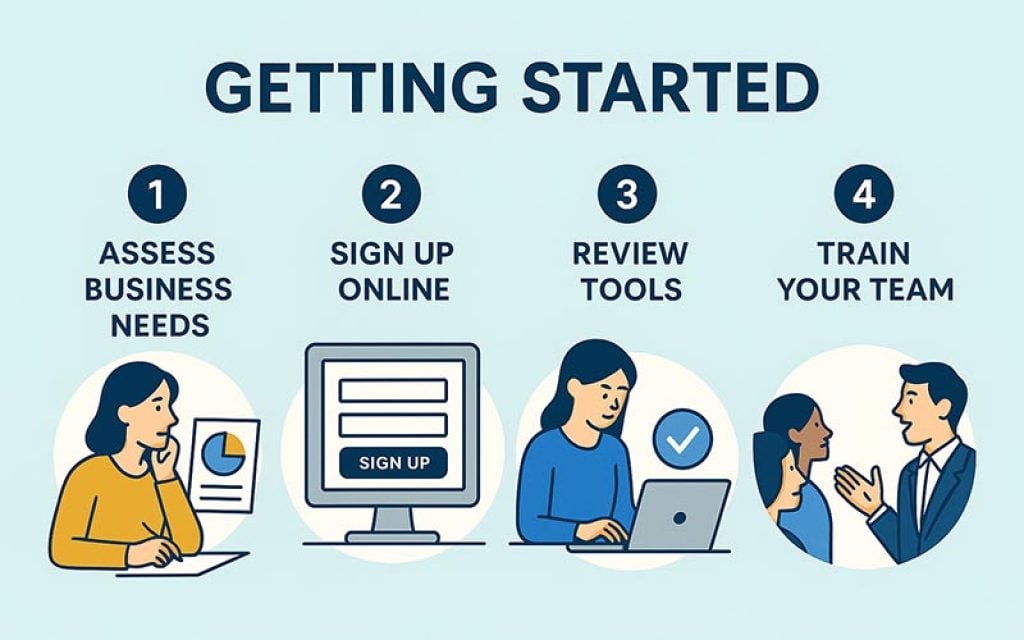
I was sitting in this family-owned Italian restaurant in North Dallas last month, watching the owner juggle phone orders during their dinner rush. When someone called wanting to place a $180 catering order for the next day, he had to tell them to drive over just to pay with their credit card. The customer hesitated, said they’d “think about it,” and never called back.
That’s $180 walking out the door because this restaurant didn’t have a virtual terminal set up. And honestly? This scenario plays out in small businesses across America every single day.
If you’re turning away sales because you can’t process credit cards over the phone, via email, or through mail orders, you need to understand virtual terminals. They’re simpler than most business owners think, and the revenue impact can be immediate.
Table of Contents
- 1 What Exactly is a Virtual Terminal?
- 2 When Your Business Actually Needs Virtual Terminal Processing
- 3 How Virtual Terminal Processing Actually Works
- 4 Real Business Benefits (And Why They Matter)
- 5 Choosing the Right Virtual Terminal Provider
- 6 Popular Virtual Terminal Providers
- 7 Security Best Practices for Virtual Terminal Processing
- 8 Getting Started with Virtual Terminal Processing
- 9 The Future of Virtual Terminal Technology
- 10 Frequently Asked Questions
- 10.1 Are virtual terminals secure for processing payments?
- 10.2 How much do virtual terminals cost?
- 10.3 Can I use virtual terminals with my existing POS system?
- 10.4 What information do I need from customers to process virtual terminal payments?
- 10.5 How quickly do virtual terminal payments deposit to my bank account?
- 10.6 Can I process refunds through virtual terminals?
- 10.7 Do I need special equipment for virtual terminal processing?
- 10.8 What’s the difference between virtual terminals and virtual merchants?
- 10.9 What happens if a virtual terminal transaction is declined?
- 10.10 Do all credit card types work with virtual terminals?
- 11 Making the Right Choice for Your Business
What Exactly is a Virtual Terminal?
Let me cut through the technical jargon here. A virtual terminal is basically an online form where you type credit card information to process payments when the customer isn’t physically present. Think of it as a digital cash register that lives in your web browser.
You know when you buy something online and enter your card details on a checkout page? Virtual terminals work exactly the same way, except you’re entering someone else’s payment information with their permission.
I always explain it to restaurant owners like this: imagine your card reader had a keyboard instead of a card slot. Customer calls with their order, gives you their card numbers over the phone, you type them into your virtual terminal, and the payment processes just like they handed you their physical card.
The whole transaction takes about 30 seconds once you get comfortable with the process. No special equipment needed, no software to install, no IT person required.
Ready to start accepting virtual terminal payments?
Get personalized rate quotes and setup timelines
Compare Virtual Terminal Providers >>
When Your Business Actually Needs Virtual Terminal Processing

Not every business needs virtual terminals, but there are specific situations where they become absolutely essential for capturing revenue.
Phone Orders and Remote Sales
This is the most obvious use case, but you’d be surprised how many businesses still don’t get it. Pizza places figured this out decades ago, but I still encounter Chinese takeout restaurants, catering companies, and specialty food businesses that make customers drive over just to pay.
Last year, I worked with a BBQ joint that was losing about 25% of their potential catering business because they couldn’t accept phone payments. Once we set up their virtual terminal, their monthly catering revenue increased by over $3,000 within three months.
Service-Based Business Deposits
This is where virtual terminals really shine for cash flow improvement. HVAC companies collecting deposits before service calls. Wedding photographers taking retainers from couples who live in different states. Contractors securing payment before starting projects.
One plumbing contractor I worked with told me virtual terminals completely changed his business model. Instead of collecting payment after completing work (and sometimes chasing customers for weeks), he started taking full payment upfront. His cash flow went from unpredictable to steady almost overnight.
E-commerce Backup and Special Situations
Even if you primarily operate online, virtual terminals serve as crucial backup when your main payment system experiences issues. I’ve seen online retailers save sales during website outages by processing orders manually through virtual terminals.
They’re also perfect for those weird situations that pop up in business. Customer sees something on your social media and wants to buy it immediately. Regular customer is traveling but needs to pay an outstanding invoice. Your card reader breaks on a busy Saturday.
How Virtual Terminal Processing Actually Works

The technical process is straightforward, but let me walk you through what actually happens behind the scenes so you understand the security and verification aspects.
When a customer provides their payment information, you log into your virtual terminal through a web browser or mobile app. You’ll see a form similar to any online checkout – fields for card number, expiration date, CVV code, billing address, and transaction amount.
You enter the customer’s information exactly as they provide it. The virtual terminal encrypts this data and routes it through the same payment networks that handle in-person transactions. Within seconds, you receive an approval or decline response.
What makes virtual terminals more secure than you might expect is the additional verification tools. Address verification systems, CVV matching, and velocity checking all help catch fraudulent transactions before they process.
The customer automatically receives an email receipt, and the transaction appears in your daily processing batch just like any in-store sale. From an accounting perspective, there’s no difference between virtual terminal payments and physical card transactions.
Real Business Benefits (And Why They Matter)
Let me share what I actually see happening with businesses after they implement virtual terminals, because the benefits go beyond just accepting remote payments.
Immediate Cash Flow Improvement
The cash flow impact is usually the biggest surprise for business owners. Instead of mailing invoices and waiting 30-45 days for payment, you’re getting money in your account within 1-2 business days.
I worked with a landscaping company that was constantly struggling with cash flow because of net-30 payment terms on commercial contracts. Once they started collecting 50% deposits via virtual terminal, their financial stress decreased dramatically. They could cover payroll and material costs without constantly juggling payment timing.
Expanded Revenue Opportunities
Virtual terminals let you say “yes” to sales opportunities that would otherwise disappear. Custom orders from out-of-state customers. Corporate clients needing items shipped to multiple locations. Seasonal businesses taking advance orders during their off-season.
A boutique owner I know sold a $750 designer handbag to someone in California who saw it on Instagram. Without virtual terminals, that sale never happens. She told me these “surprise sales” now account for about 15% of her monthly revenue.
For businesses already operating online, virtual terminals also serve as essential backup systems when your main e-commerce payment processing experiences technical issues.
Better Customer Experience
Here’s something that caught me off guard initially – customers actually prefer paying immediately rather than dealing with invoices or making special trips to your location. When someone calls to place an order, they want to complete the transaction right then and there.
One restaurant owner described his phone order process transformation: from a 5-minute conversation followed by a 20-minute drive for the customer, to a 2-minute call with immediate payment. Customer satisfaction improved, and he eliminated no-shows completely.
Choosing the Right Virtual Terminal Provider

The virtual terminal market has gotten crowded over the past few years, and sorting through the options can be overwhelming. Here’s what I focus on when helping businesses choose.
Pricing Structure That Makes Sense
Virtual terminal rates typically run higher than in-person transactions – usually 2.7% to 3.5% plus potential monthly fees. The reason is simple: card-not-present transactions carry more fraud risk, so processors charge accordingly.
But here’s what most people get wrong – they only look at the headline percentage rate. I’ve seen providers advertising 2.6% rates that end up costing more than providers charging 3.2% once you factor in monthly fees, per-transaction costs, and setup charges.
Calculate your total monthly cost based on expected transaction volume, not just the processing percentage.
Integration Capabilities
If you’re already using POS software, accounting systems, or business management tools, integration becomes crucial. The best virtual terminals connect seamlessly with QuickBooks, Xero, most major POS platforms, and even some CRM systems.
Without proper integration, you’re looking at manual data entry for every transaction. That gets tedious fast and creates opportunities for mistakes in your bookkeeping.
User Interface and Ease of Use
Some virtual terminals look like they were designed in 1998 – complex menus, confusing workflows, tiny input fields. Others are clean and intuitive.
This might seem superficial, but when you’re processing payments under pressure – busy lunch rush, customer on hold, other tasks waiting – a confusing interface costs time and creates stress.
Popular Virtual Terminal Providers
Many payment processors and POS companies now offer virtual terminal capabilities as part of their service packages. Here are some established options worth considering:
Square Virtual Terminal offers a straightforward virtual terminal with no monthly fees and simple 3.5% per-transaction pricing. It’s particularly popular with small businesses because of its clean interface and quick setup.
Stripe excels for businesses needing strong online integration, offering competitive rates at 2.9% + $0.30 with powerful API capabilities for custom implementations.
Clover provides more advanced features like detailed reporting and inventory integration, making it popular with restaurants and retailers processing higher virtual terminal volumes.
Virtual Merchant Services caters to established businesses with competitive rates for high-volume processing and dedicated account management.
PayPal offers virtual terminal access for existing business users, providing familiar interface and brand recognition, though at higher processing rates.
Authorize.Net provides reliable virtual terminal services with robust security features, popular among established businesses that prioritize stability and extensive integration options.
When evaluating providers, focus on your specific needs: transaction volume, integration requirements, support preferences, and total cost rather than just headline rates.
Security Best Practices for Virtual Terminal Processing
Processing card-not-present transactions carries more risk than in-person payments, but it’s manageable with proper procedures.
Always verify billing address and CVV code – those verification steps catch a surprising amount of fraud. For transactions over $200, ask additional questions about the order. Legitimate customers understand security measures; fraudsters often get nervous and hang up.
Keep detailed records of all transactions: customer contact information, order details, authorization codes, and any notes about the conversation. When chargebacks happen, this documentation often determines whether you win or lose the dispute.
Most importantly, skip verification steps at your own risk. I’ve seen businesses lose thousands during busy periods when they got careless about address verification and CVV checks to save time.
Getting Started with Virtual Terminal Processing

Start by evaluating your needs: expected monthly transaction volume, average transaction amount, and integration requirements. Apply for a merchant account with your chosen provider – most applications get approved within 24-48 hours for established businesses.
Test the system with small transactions before going live, and train your staff on verification procedures. The key is starting simple and expanding as your needs grow.
See how virtual terminal processing could impact your specific business:
Get personalized rate quotes and setup timelines
Compare Solutions for Your Business >>
The Future of Virtual Terminal Technology
Virtual terminal technology keeps evolving with AI-powered fraud detection, improved interfaces, and better integration capabilities. The biggest trend is simplification – providers that make virtual terminals incredibly easy to use are winning because business owners just want to get paid efficiently.
Frequently Asked Questions
Are virtual terminals secure for processing payments?
How much do virtual terminals cost?
Can I use virtual terminals with my existing POS system?
What information do I need from customers to process virtual terminal payments?
How quickly do virtual terminal payments deposit to my bank account?
Can I process refunds through virtual terminals?
Do I need special equipment for virtual terminal processing?
What’s the difference between virtual terminals and virtual merchants?
What happens if a virtual terminal transaction is declined?
Do all credit card types work with virtual terminals?
Making the Right Choice for Your Business
Virtual terminals provide valuable flexibility for businesses that need to accept remote payments, but the key is choosing the right solution and implementing it properly from day one.
Don’t get overwhelmed by feature lists and marketing materials. Focus on your actual business needs: transaction volume, integration requirements, staff technical comfort level, and budget constraints.
The technology itself isn’t complicated, but the business impact can be significant. Done right, virtual terminals become an invisible part of your operation that simply makes everything work better – capturing sales that would otherwise walk away, improving cash flow, and providing customers with the payment flexibility they expect.
Whether you’re a restaurant taking phone orders, a service business collecting deposits, or any operation that needs to process payments when customers aren’t physically present, virtual terminals can streamline your payment processing and grow your revenue.
The key is starting with a solution that fits your current needs while leaving room to grow as your business evolves. Sometimes the best choice is the one that gets you processing remote payments next week, not the perfect solution that takes months to implement.
Ready to explore POS systems with virtual terminal capabilities? At POS USA, we help businesses find the right payment processing solutions for their specific needs. Virtual terminals are just one piece of a comprehensive payment strategy that can transform how you handle transactions and grow your revenue.
Ready to start accepting virtual terminal payments?
Get personalized rate quotes and setup timelines
Compare Virtual Terminal Providers >>








